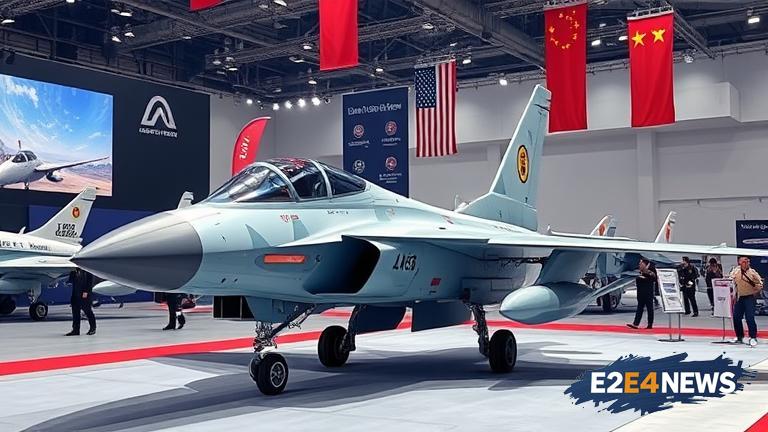China has once again demonstrated its growing military prowess with the unveiling of its latest cutting-edge technology at Airshow China 2022. The event, held in Zhuhai, Guangdong Province, showcased a range of advanced military equipment, including stealth drones, hypersonic missiles, and next-generation fighter jets. The Chinese military has been rapidly modernizing its capabilities in recent years, with a focus on developing advanced technologies such as artificial intelligence, cybersecurity, and electronic warfare. One of the highlights of the airshow was the debut of the CH-7 stealth drone, a high-altitude, long-endurance unmanned aerial vehicle (UAV) designed for reconnaissance and strike missions. The CH-7 is equipped with advanced sensors and communication systems, allowing it to operate in a network-centric environment and provide real-time battlefield intelligence. Another notable exhibit was the CM-401 hypersonic missile, a state-of-the-art weapon system capable of reaching speeds of over Mach 5. The CM-401 is designed to evade enemy air defenses and strike targets with high precision, making it a game-changer in modern warfare. China has also made significant progress in the development of its next-generation fighter jets, including the J-20 and J-31. These aircraft feature advanced stealth capabilities, supercruise engines, and highly advanced avionics systems, making them highly effective in air-to-air combat. The J-20, in particular, has been touted as a potential rival to the US F-22 and F-35 fighter jets, with its advanced stealth design and maneuverability. In addition to its military hardware, China has also been investing heavily in the development of its space-based capabilities, including satellite constellations and space-based surveillance systems. These systems will provide the Chinese military with enhanced situational awareness and command and control capabilities, allowing it to respond more effectively to emerging threats. The airshow also featured a range of other advanced military technologies, including unmanned underwater vehicles (UUVs), advanced radar systems, and cyber warfare capabilities. China’s military modernization efforts have been driven by a desire to protect its growing global interests and to counter the military presence of other major powers in the region. The country has been expanding its military presence in the South China Sea and has established a number of overseas military bases, including in Djibouti and Pakistan. China’s military has also been engaged in a number of international peacekeeping and humanitarian missions, including in the United Nations and the Shanghai Cooperation Organization. Despite its growing military capabilities, China has repeatedly stated that it is committed to a path of peaceful development and that its military modernization efforts are purely defensive in nature. However, the country’s rapid military expansion has raised concerns among its neighbors and other major powers, who are wary of China’s growing military presence in the region. The US, in particular, has been critical of China’s military modernization efforts, citing concerns over the country’s lack of transparency and its potential to disrupt the regional balance of power. Nevertheless, China’s military modernization efforts are likely to continue, driven by the country’s growing economic and strategic interests. As the country continues to expand its military presence and develop new advanced technologies, it is likely to play an increasingly important role in regional and global security affairs. The airshow has provided a unique glimpse into China’s military capabilities and has highlighted the country’s growing importance as a major military power. With its advanced technologies and expanding military presence, China is likely to be a key player in shaping the future of regional and global security. The country’s military modernization efforts will continue to be closely watched by its neighbors and other major powers, who will be seeking to understand the implications of China’s growing military capabilities for regional and global security. As China continues to develop its military capabilities, it is likely to face a range of challenges and opportunities, including the need to balance its military expansion with its economic and diplomatic interests. The country will also need to navigate the complex web of regional and global security relationships, including its relationships with the US, Russia, and other major powers. Ultimately, China’s military modernization efforts will have significant implications for regional and global security, and will be closely watched by policymakers and analysts around the world.
